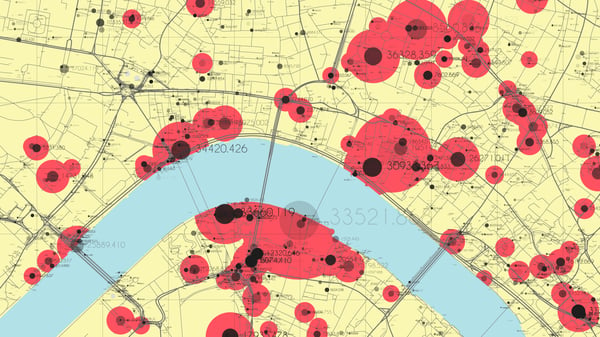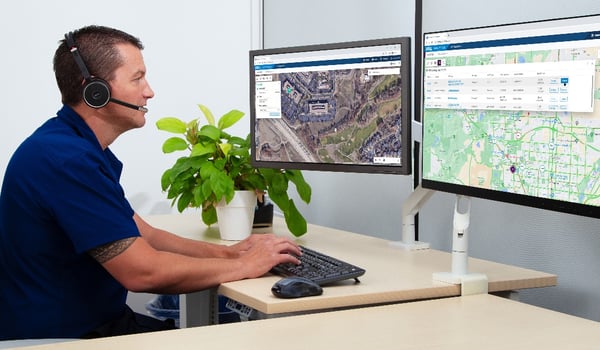4 Must-have Data Points for Dispatch-Billing Alignment and Maximum Reimbursement
Leverage Real-Time Data for Improved Ambulance Response Times
Response-time performance is one of the most important issues facing any EMS organization
Was this information valuable?

Response-time performance is one of the most important issues facing any EMS organization. An organization must measure response in increments in order to effectively reduce response-times. Moving the response time needle happens with intelligence and constant reinforcement, not speed. Understanding the incremental sequences of a call, and how these increments can be managed results in reduction of response times.
What is a Response Time? EMS response times can be measured in a variety of ways and can be different for EMS organizations—if you have seen one EMS system, you have seen one EMS system. Different times mark the start of the “response” clock... Some services start measuring response times from the time the 911 call is initially answered at a public safety answering point (PSAP), others when the PSAP transfers the call to a medical dispatching point and others when the assignment is dispatched.
EMS response times can be measured in a variety of ways and can be different for EMS organizations—if you have seen one EMS system, you have seen one EMS system. Different times mark the start of the “response” clock... Some services start measuring response times from the time the 911 call is initially answered at a public safety answering point (PSAP), others when the PSAP transfers the call to a medical dispatching point and others when the assignment is dispatched.
In my opinion, the most representative definition of response time should be from the time the 911 telephone is answered until appropriate resources have arrived at the scene of the emergency. This response time consists of at least five segments:
- 911 call is answered. The first segment ends when it’s identified as an emergency medical incident through call identification.
- Caller interrogation. During this segment details regarding the incident, such as location (preferably with geo-coding), complaint, severity, etc., are elicited from the caller. This period begins when an event is identified as needing emergency medical resources and ends when the decision to dispatch units has been made.
- Dispatch time, which is when the resources to be dispatched are identified and notified. These first three increments—call evaluation, caller interrogation and unit dispatch time—compose the system dispatch time.
- Out-of-chute-time. This begins when dispatch notifies the unit to respond and ends when the unit begins “wheels rolling” toward the scene. The launch time combined with the system dispatch time composes the unit activation time.
- En route time. This begins when the ambulance or EMS unit begins to respond, and ends when it arrives at the scene.
Some systems measure patient access time, which is the length of time from the unit’s arrival at the scene until patient contact is made. The sum of all these increments will provide the EMS response time; the thought that speed is the only factor that drives response times is flawed. An over emphasis on speed will jeopardize the safety of the crew and the community.
How to Manage Real-Time Planning to Ensure Compliance
Data-driven decision making in determining post location, post priority, work load management and provider satisfaction are core EMS business. High Performance EMS (HPEMS) systems use a process called systems status management (SSM) for dynamically deploying resources and post and workload planning. SSM is about posting your vehicles where an emergency is most likely to occur based on a historical analysis of temporal and geographic call location. An SSM plan varies by time of day and day of week (based on historical demand), and they vary by the number of available resources (operational levels).
Good decisions come from good analysis of good data. Your CAD system and the central nervous system of deployment. The ability to quickly analyze data and react to this data in real time makes the HPEMS effective and efficient. Traditional SSM is a powerful and reliable model, but it can be a labor intensive process when done manually (hope you know Minitab or SPSS!). Given the many demands on time, generating a new deployment plan doesn’t always make its way to the top of a priorities’ list. Given the dynamic nature of calls, and road conditions at various times of the day, you need all the information possible to make the right decisions and ensure compliance in as close to real time is essential.
"Placing vehicles strategically in the best location is a huge benefit for the patient."
A key element to maximize the SSM process, reduce response times and ensure compliance is an automated mapping system capable of eliminating the need for cumbersome, time-consuming map books. But the system needs to do much more than that. It must use wireless communications between the CAD system and an in-vehicle device to provide navigational support based on historical drive times combined with real-time traffic update, which can happen as often as every three seconds as the vehicle moves. It would allow dispatchers to continuously monitor vehicle locations, constantly changing their view of vehicles’ service areas to show locations they can reach within a target time. Dispatchers are able to then determine which vehicle can reach a patient the fastest from its current location and decide whether a unit should move to a new post or remain at its current location to provide optimal coverage.
Deployment can be improved by using historical data based on such variables as the day, week, month and time of day. A transparent silhouette can be overlaid on a map to show where calls are expected to be based on historical data and on such variables as the hour of the day. This demand monitoring process should update at least every five minutes and go back in history for as long as it takes to determine likely calls in the next hour with statistical confidence. This helps to reduce post moves and improve staff satisfaction. As an example, if a vehicle is three or four miles away from the post where it’s scheduled to be, dispatch may find they have coverage without moving the vehicle. Placing vehicles strategically in the best location is a huge benefit for the patient. Reducing the number of post moves is a huge benefit for provider satisfaction; but this can only be done through a thorough temporal and geographical understanding of the service area and a coordinated, a well-researched posting plan, consistent implementation and operational plans.
Related Posts
How EMS Agencies Can Reframe Need and Refocus Resources With Geospatial Analytics
How To Minimize Radio Chatter and Reduce Guesswork With Smarter Dispatch Resource Management
ZOLL Pulse Blog
Subscribe to our blog and receive quality content that makes your job as an EMS & fire, hospital, or AR professional easier.
ZOLL Pulse Blog
Subscribe to our blog and receive quality content that makes your job as an EMS, fire, hospital, or AR professional easier.




